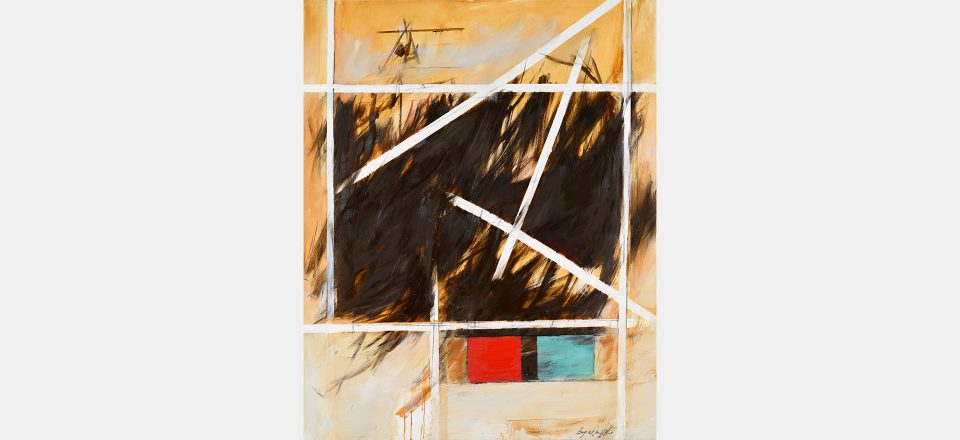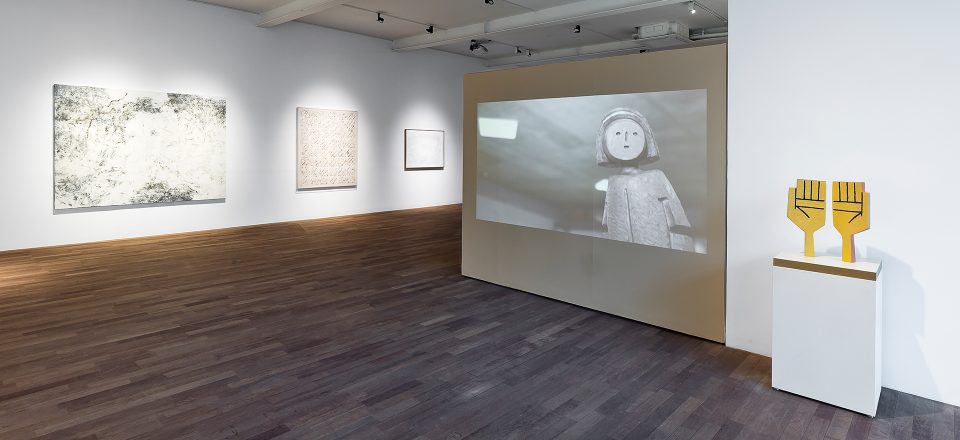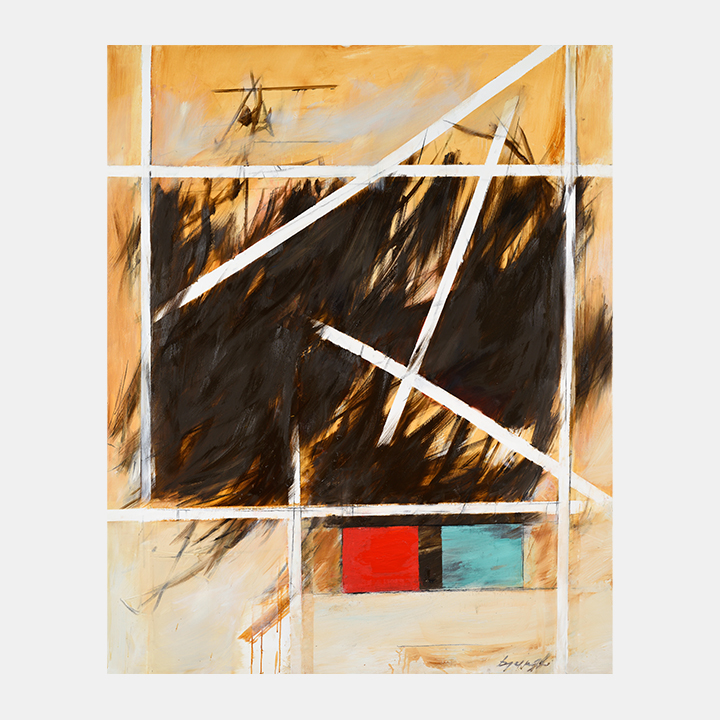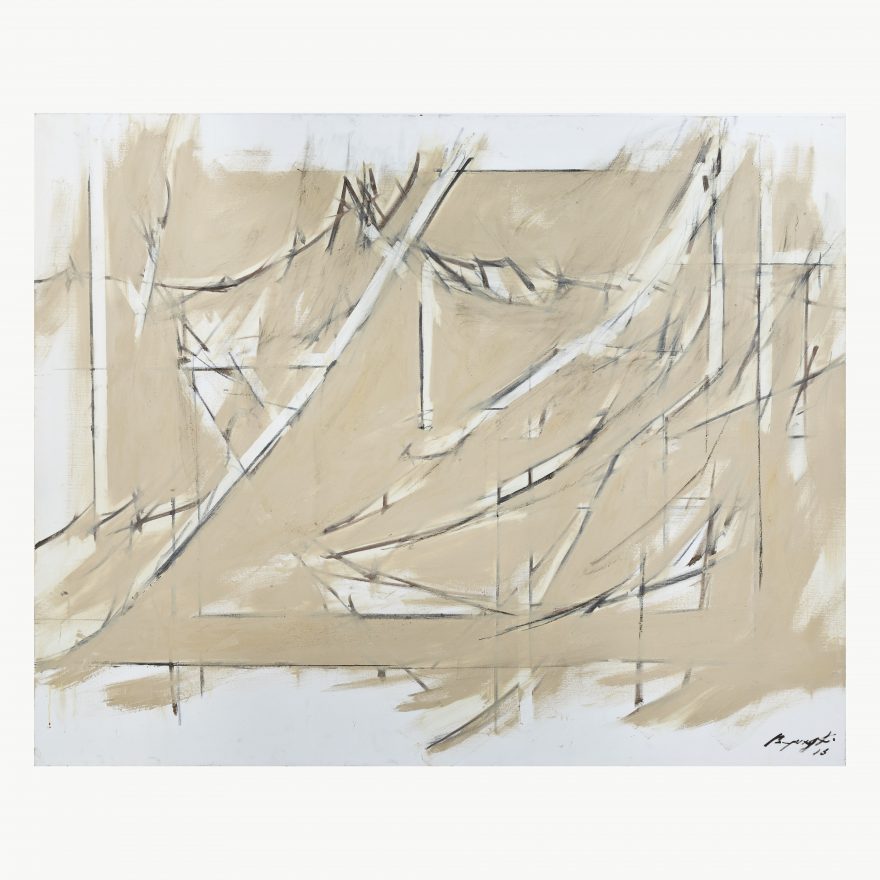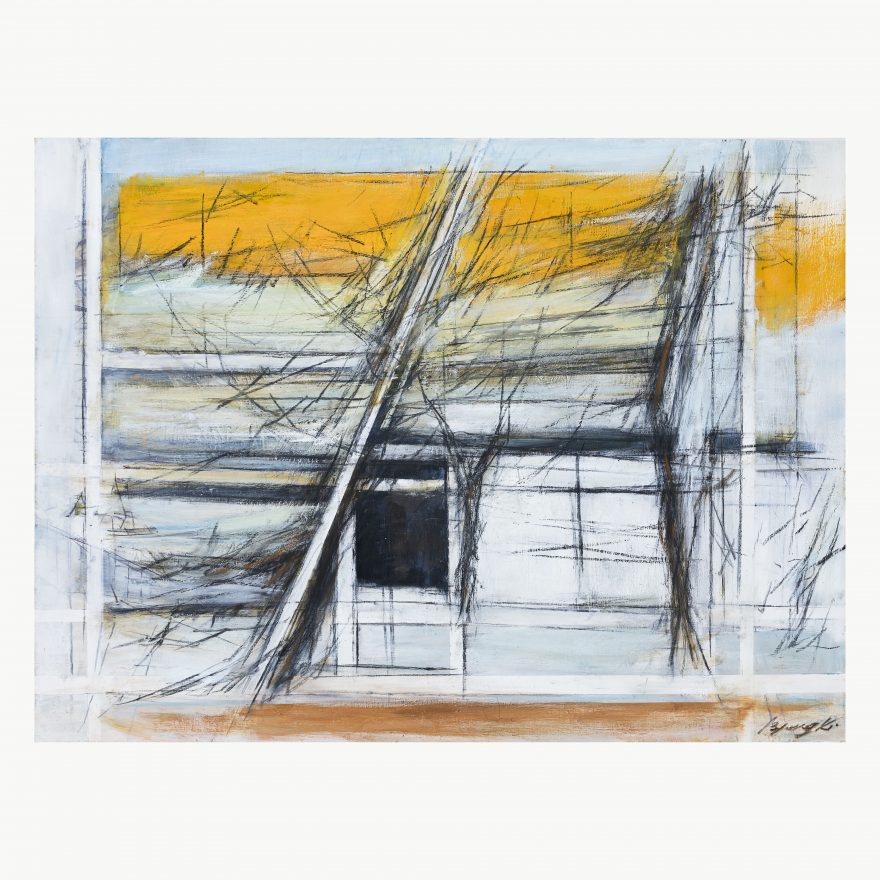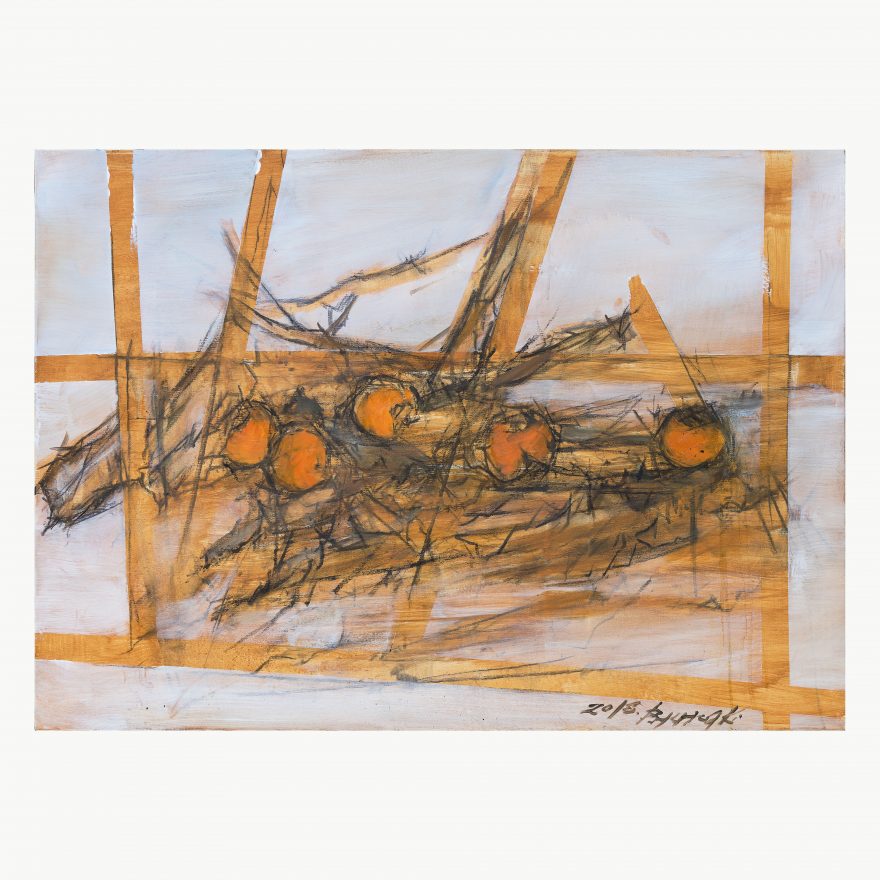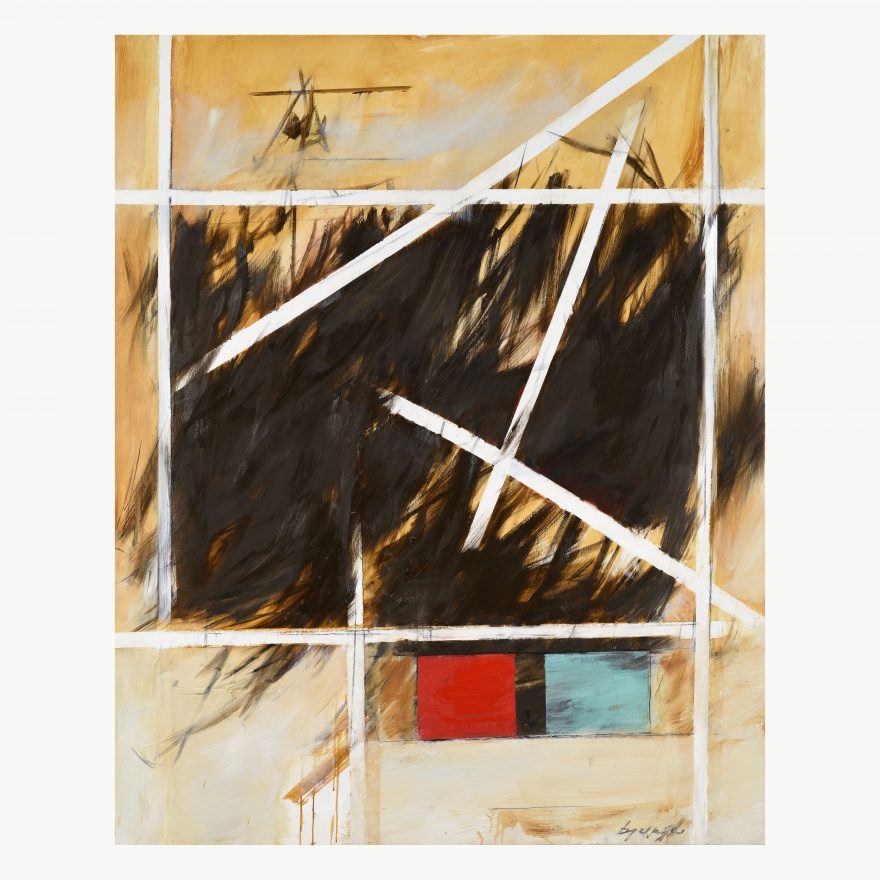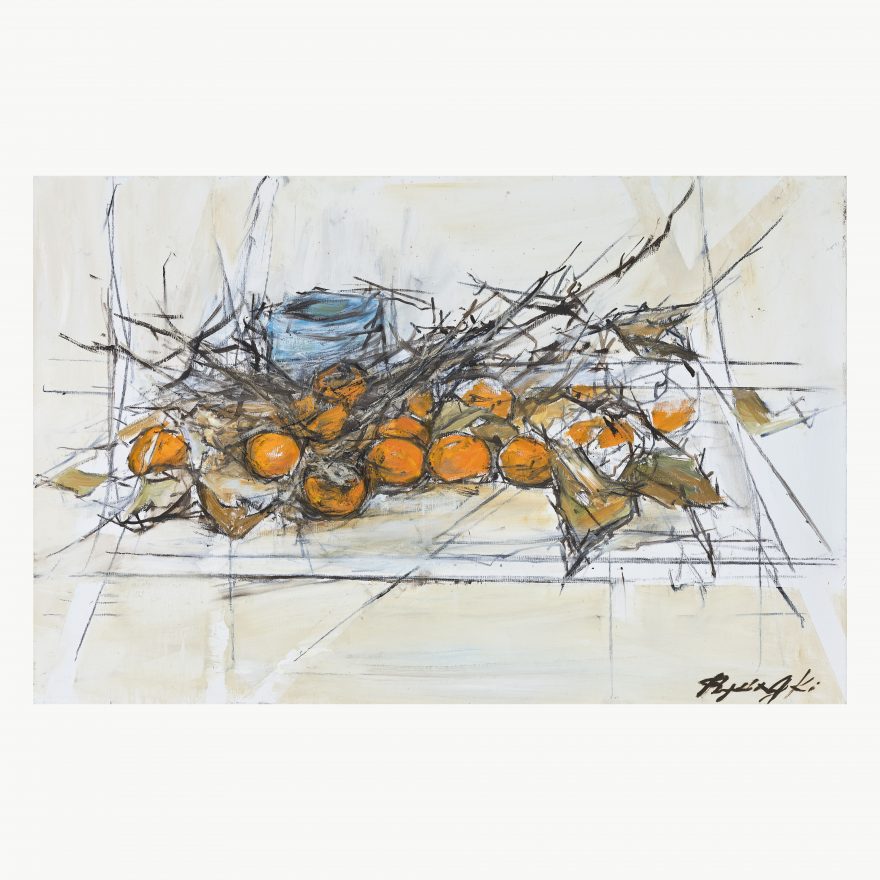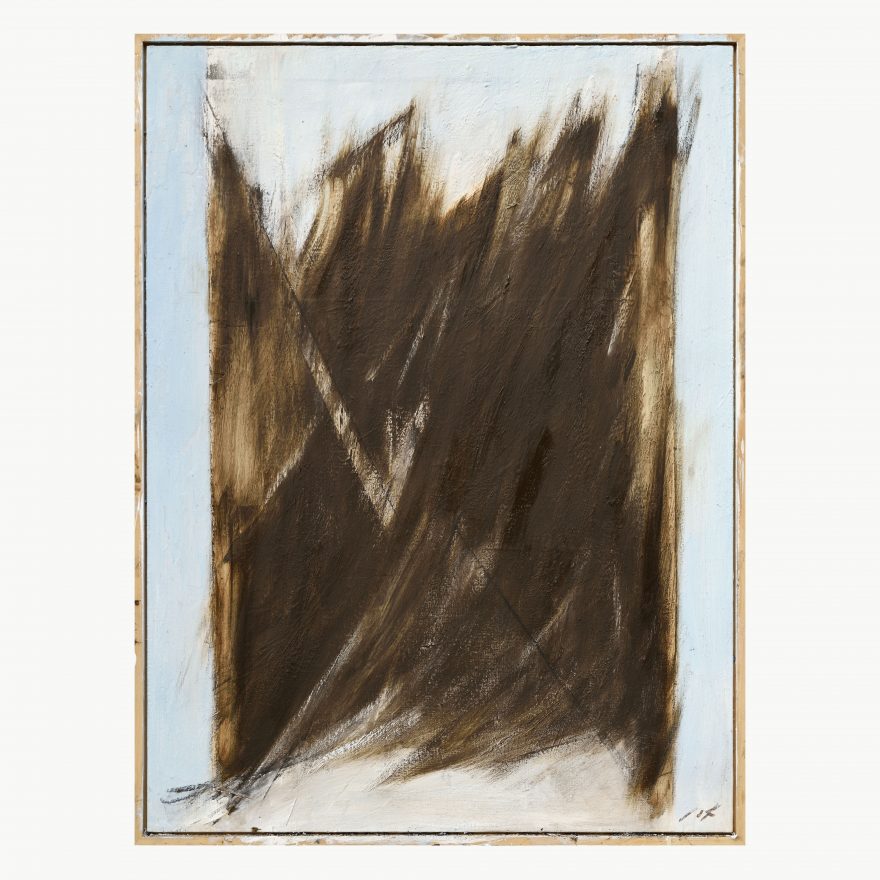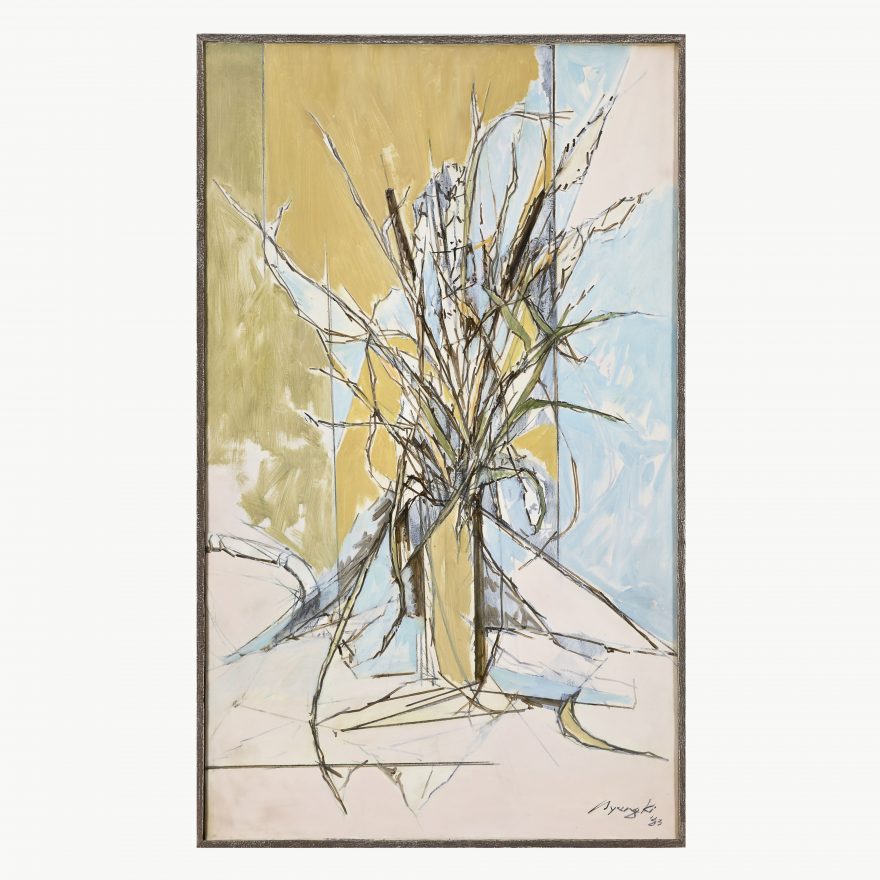ARTIST
Kim Byungki
김병기
1916-2022
Kim Byungki (1916-2022), who has been painting ever since the 1930s, is a veteran artist who has left significant footprints in the history of Korean modern and contemporary art, through his experiments with contemporary form in Korea and abroad. Kim began studying abstraction after his encounter with abstract painting and surrealist art during his education in Japan; he discovered calligraphic formative beauty in the styles of Informel in the 1950s. He thereafter created a new and unique formative language of his own. Unlike the abstract painting of the West, emphasizing materiality, Kim Byungki has stressed narrative elements. His interest in the narrative later led him toward figurative painting, which began to show in his work from the 1970s. Some of the common formative characteristics in his works, traversing abstract and figurative, are their dynamic brush strokes and straight lines resembling traditional ink paintings. The straight lines symbolize the urban landscape, portraying the image of Korea resulting from rapid economic growth through the city skyline thickly filled with high-rise buildings. Other works, on the other hand, show moderately curved lines, which are believed to symbolize the roof tiles of traditional houses and the ridges of mountains. Similar to the dichotomous structure of abstract and figurative, the city and nature also are contrasting concepts. Kim Byungki has strived to break down the boundaries of such differences. That is to say, he does not intend to portray harmony through contrast, but to capture the tight tension of the contrast in his picture-planes.
1930년대부터 현재까지, 오랜 기간 화업(畵業)을 이어온 김병기 화백(1916-2022)은 국내외를 오가며 실험한 현대적인 조형성을 기저로 한국 근현대미술사에 주요한 족적을 남긴 원로화가다. 일본 유학 중에 추상화와 초현실주의 미술을 접하고 추상성에 대한 연구를 시작한 작가는 1950년대 앵포르멜의 화풍에서 서예적인 조형미를 발견한 후 이를 토대로 한 자신만의 새로운 조형언어를 만들어 나갔다. 특히 김병기는 추상화에 물질성을 강조한 서양과는 다르게 서사적인 요소를 중시하였다. 서사에 대한 관심은 결국 구상으로 나아가는 계기가 되었으며 1970년대부터 그의 화풍은 구상성을 띄기 시작했다. 구상과 추상을 오가는 그의 작업에서 공통적으로 드러나는 조형적인 특성 중에 하나는 전통 수묵화를 연상시키는 역동적인 붓의 흔적과 직선의 요소들이다. 직선은 도시 풍경을 상징하는 것으로, 급격한 경제성장을 통한 우리나라의 이미지를 직선의 건물들이 빼곡히 들어선 도시와 연결한 것이다. 또한 그의 그림에서는 곡선에 가까운 직선도 나타나는데, 이는 곧게 뻗었으나 곡선적인 특성을 지닌 전통가옥의 기와나 산의 능선을 상징하기도 한다. 추상과 구상이라는 이분법적인 구조처럼 도시와 자연도 대비되는 개념으로, 김병기는 차이의 경계를 해체하기 위해 노력하였다. 즉, 그는 대조를 통한 조화가 아닌, 팽팽하게 대비되는 그 경계를 화폭에 담아내고자 하는 것이다.
